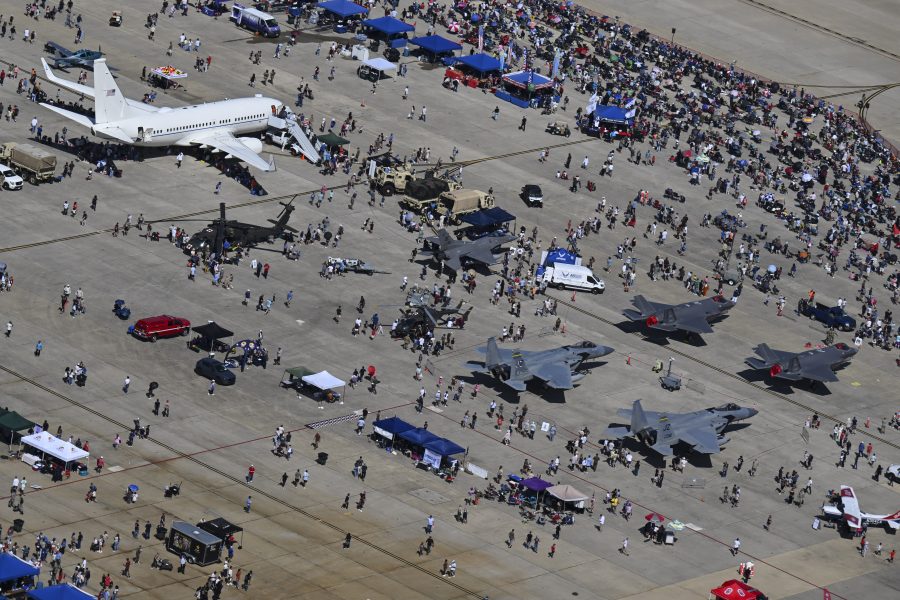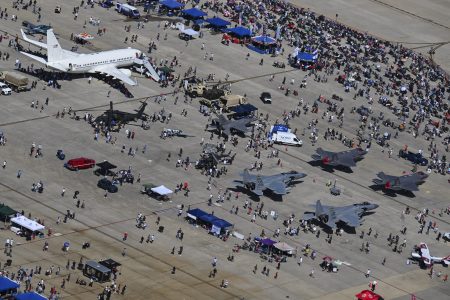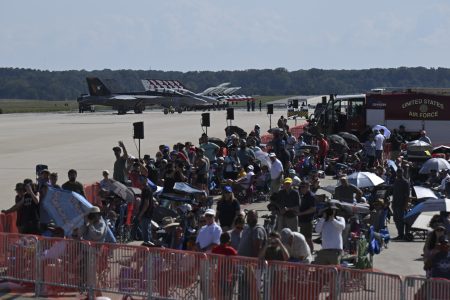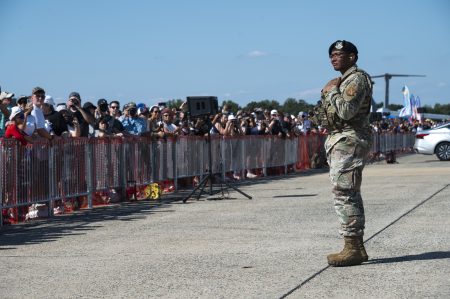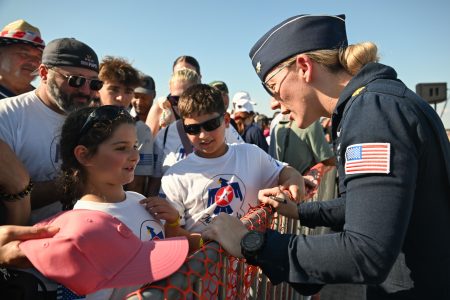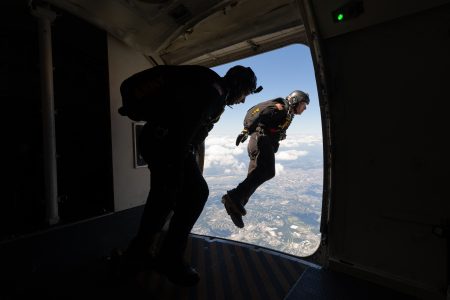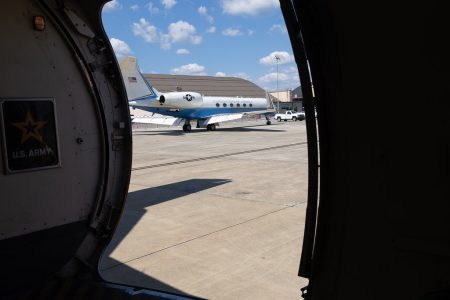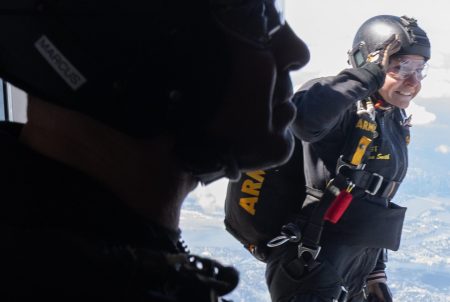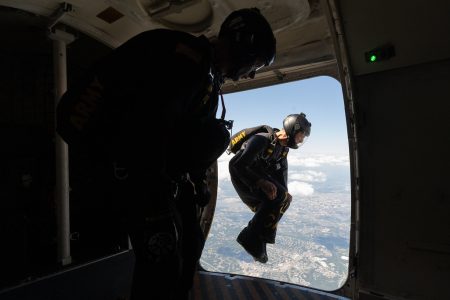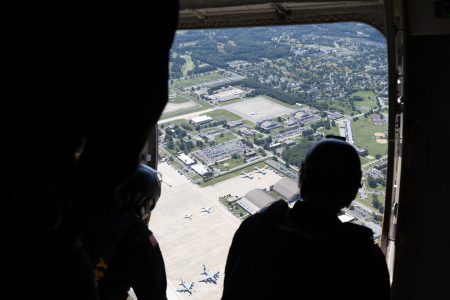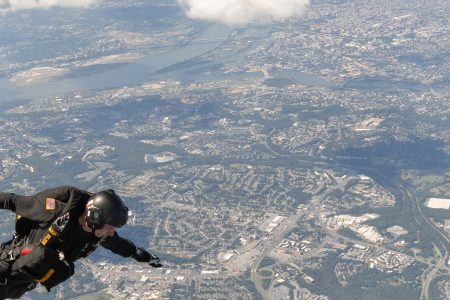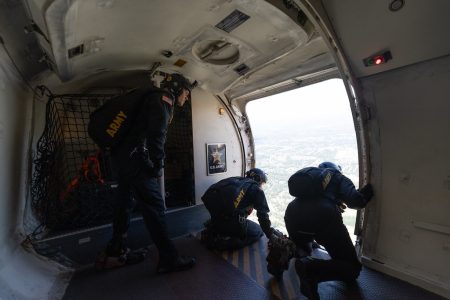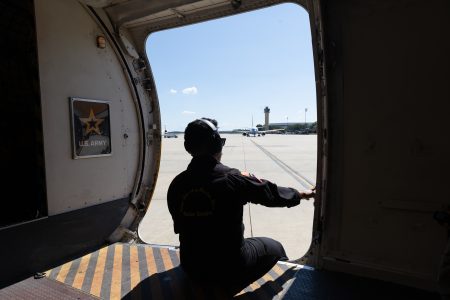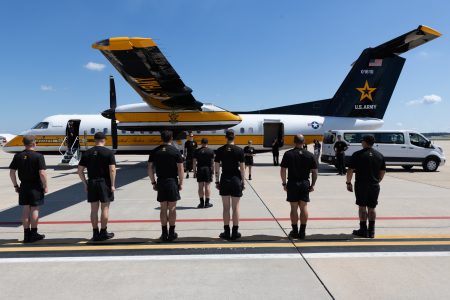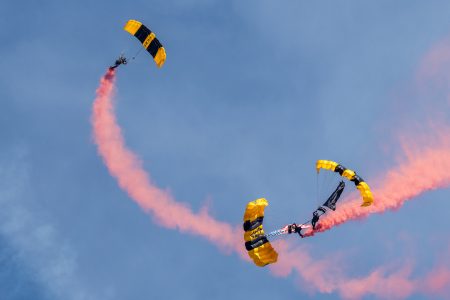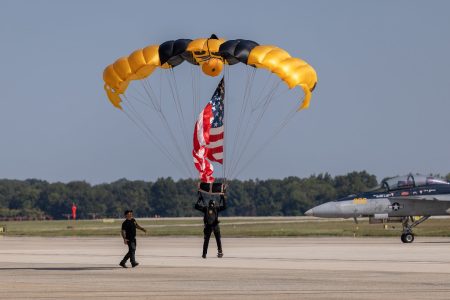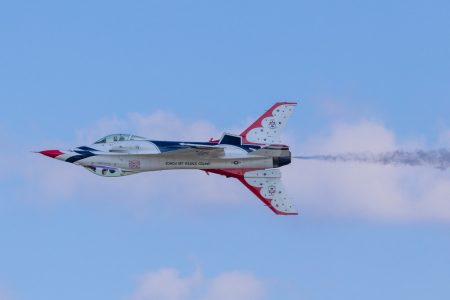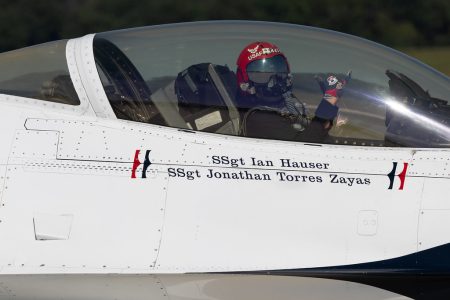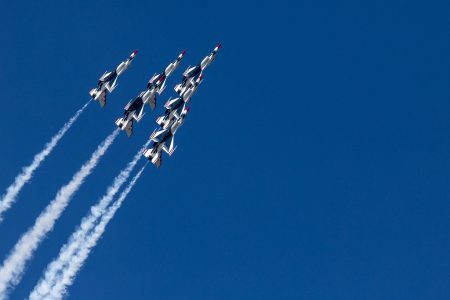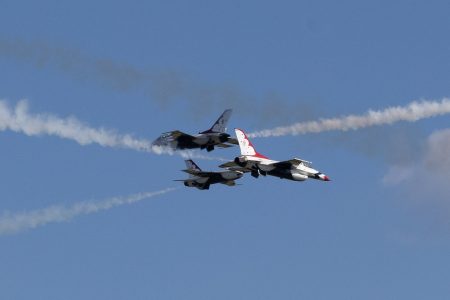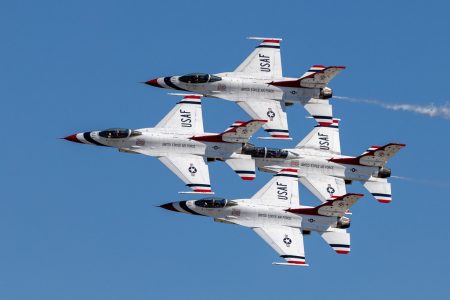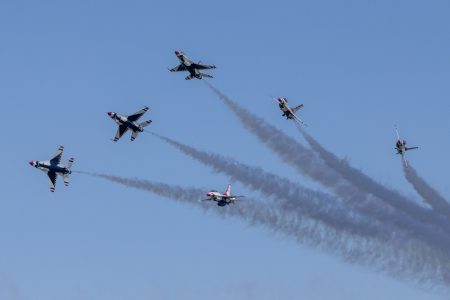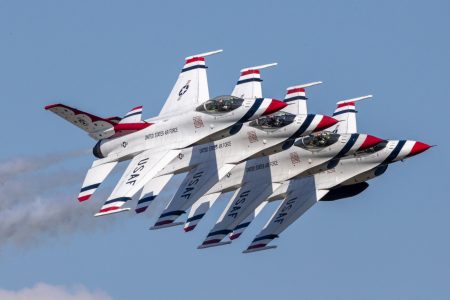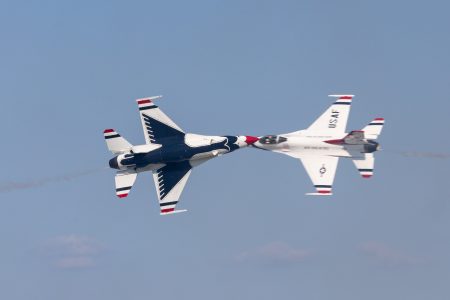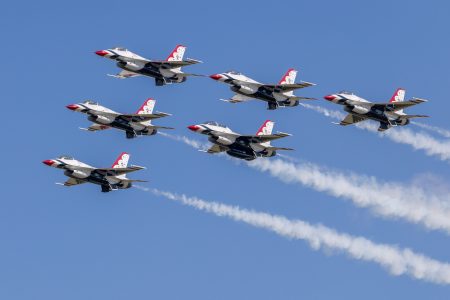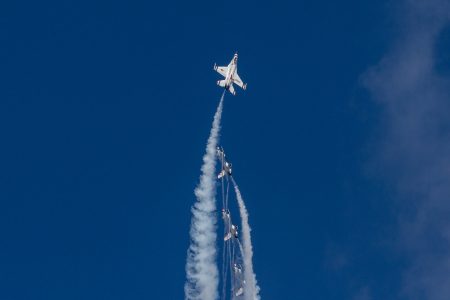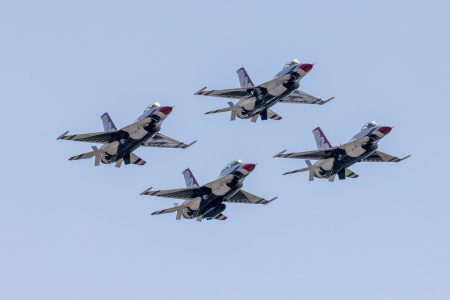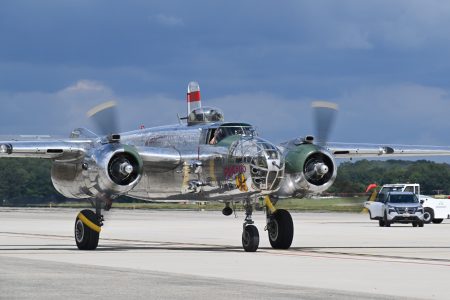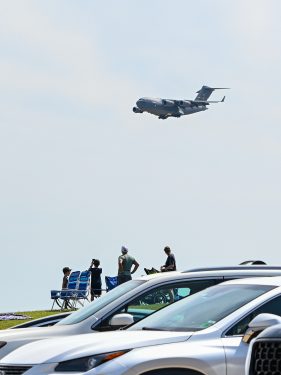Joint Base Andrews opened its flightline this month to thousands of civilians, exposing a normally restricted airbase that regularly hosts the president and foreign dignitaries to a curious public eager to see current and historic military aircraft up close and in action.
Located not far from Washington, D.C., in Maryland, Andrews is among the U.S. military’s most secure installations, with a primary mission to provide a protected flightline for the President, Vice President, and other top government leaders.
For Lt. Col. James Bowron, chief of safety at Andrews, that mindset never changes, not even when he takes on the additional title of Air Show Director, which means planning for more than 150,000 visitors to flood the airfield over three days.
“We are always postured for extremely high security, because the President uses this place, the Vice President uses this place, the Secretary of State, the First Lady, the Secretary of War … one of them is always here doing something,” he told Air & Space Forces Magazine.
“The problem is that when you have all of that security, when the guns are outward, and then you’re like, ‘Wow, now we have to let the public on base.’ It’s hard to figure out how to change that mentality.”
The onslaught included 120,000 civilians attending the main event Sept. 13-14, plus about 30,000 War Department personnel, school kids, and family members who attended the Joint Base Andrews Air Show on Sept. 12. The three-day total of 150,000 visitors exceeded the 2022 show, which celebrated the Air Force’s 75th anniversary, by about 45,000, according to Andrews officials.
This year’s blockbuster crowd got to see about 60 military aircraft, which flew in from all over the country. Among them:
- F-15 Eagle, F-16 Fighting Falcon, and F-35A Lighting fighters
- C-17 Globemaster, C-130 Hercules, C-5 Galaxy airlifters
- KC-46 Pegasus and KC-135 Stratotanker refuelers
- U.S. Army UH-60 Blackhawks, Coast Guard MH-65 Dolphin helicopters, and CV-22 Osprey tiltrotors
- Historic military aircraft including the P-40 Warhawk, P-51 Mustang and P-63 Kingcobra fighters and the A-26 Invader and B-25 Mitchell bombers
Planes and crews flew in from as far away as Travis Air Force Base, Calif., and Cannon Air Force Base, N.M., and as close as Dover Air Force Base, Del. The longest trip, though, was made by members of the Royal Australian Air Force, who flew their E-7A Wedgetail battle management jet halfway around the world for the occasion.
The U.S. Army’s Parachute Team, nicknamed the Golden Knights, also participated:
Getting them all in place before the air show was like any military operation—full of surprises. Just weeks before the show, units flying in a C-17 and a C-130 aircraft canceled, and Andrews planners had to scramble.
“When you lose something like that, it leaves a huge blank spot here on the ramp,” Patterson said. “It took some phone calls … saying, ‘Hey, we’re in a pinch.’ And the way the military works is when you’re struggling, you call your wingman, and they help you. We made it happen.”
Next on the list was the challenge of restricted airspace so close to three airports and the nation’s capital. Planners had to establish a five-mile ring of protected airspace around Andrews so the Air Force Thunderbirds’ F-16 demonstration team and all the other performing aircraft could perform their aerial maneuvers. That required extensive coordination with the Federal Aviation Administration and the air traffic controllers at Ronald Reagan Washington National Airport, Baltimore/Washington International Thurgood Marshall Airport, and Dulles International Airport.
“That five-mile ring is protected airspace that people cannot come in and our performers cannot go out of,” Bowron said. “There’s a ton of coordination that goes on because … DCA, Baltimore, and then the overall FAA, all of them have a say in what goes on in our airspace.”
Up to 3,000 additional Airmen shifted from their regular duties, effectively doubling the available security personnel on base.
“All of the people in uniform that you see out here walking around—this is not their normal job,” Bowron said.
Traffic management, magnetometers to screen each visitor, parking, 160 buses to transport guests from the screening area to the airfield—all presented challenges. Airmen armed with holstered M18 service pistols roamed the flightline all day, despite the warm September sun.
All the while, Andrews had to remain ready in case White House or other government officials needed to fly on short-notice, said Col. Chris Robinson, commander of the 89th Airlift Wing.
“If one of our nation’s senior leaders needed to go somewhere immediately, we would stop the air show and we would launch that mission,” said Robinson, whose unit is responsible for operating the airfield. “Our mission, it never stops.”
Indeed, on Sept. 13, Secretary of State Marco Rubio arrived at Andrews and departed for the Middle East, mostly unnoticed by airshow attendees.
“We’ve been planning for things like this for six months,” Bowron said on Sept. 14. “This wasn’t a surprise; we knew the day before. So it was a 24-hour surprise.”
Other surprises included unanticipated problems with processing visitors, forcing base officials to temporarily turn away arriving guests, according to a report from local news radio station WTOP.
“You can make all of these great plans, but like Mike Tyson says, ‘When you get punched in the mouth, your plan goes away,’” Bowron said. “We got punched in the mouth yesterday with the public, and we had to come up with new plans.”
And yet it’s worth it, Bowron said. Most military bases are “like black holes in the community,” he added “The community doesn’t ever get to see anything but the fence line and people with guns standing at the gate, and that’s a scary thing. … So I think when you open your gates up, and you get to bring the community in, they get to interact with Airmen, and they get to see inside the fence. It removes that mystique, and everybody becomes a better partner for it.”
And sometimes more than partners. Air shows can and do inspire young people to join the Air Force.
“I am a product of an air show,” said Robinson, a C-17 pilot. “I went to an air show when I was in the first grade, and I said, ‘That’s what I want to do.’”
Mission accomplished.
